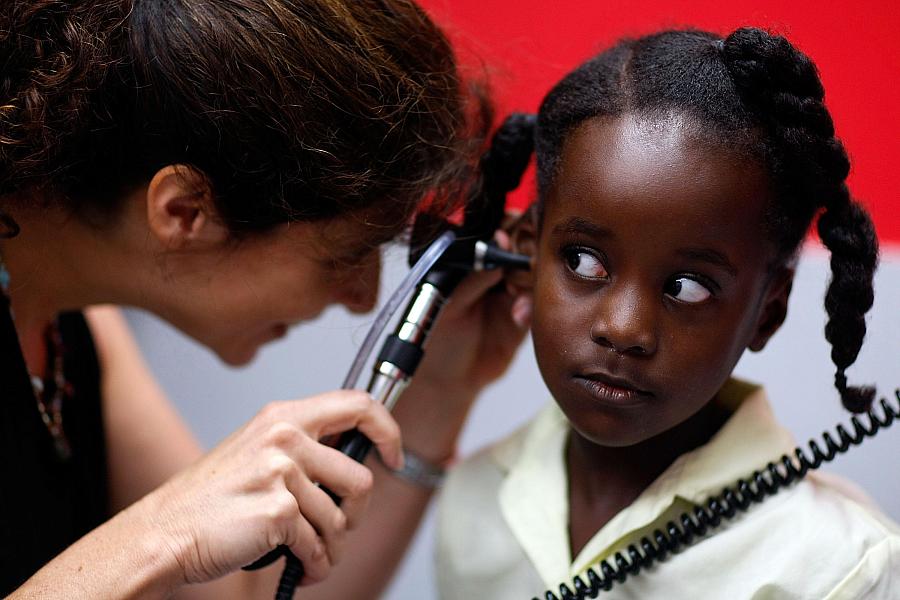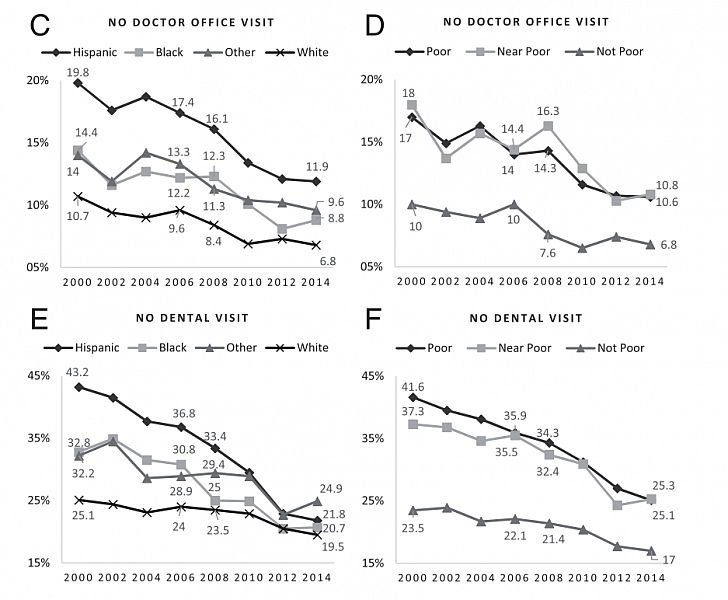Study highlights gains in children’s access to care since turn of millennium

Photo: Joe Raedle/Getty Images
Last week, I wrote about the ways in which children could lose health coverage or see their health benefits curtailed, depending on what happens to the Children’s Health Insurance (CHIP) and Medicaid programs next year.
This week, a new study in Pediatrics looks at how many more children have gained not just insurance but access to care over the past decade and a half. The study freshly clarifies what’s at stake for lower-income and minority kids as public coverage programs face the prospect of major overhauls under a Republican president and Congress.
Drawing on National Health Interview Survey data on 178,000 children ages 0 to 17, the study looked at some basic measures of health care access for 2000 to 2014 — for example, did a child visit a doctor’s office in the past year? In short, researchers found improvements in coverage and access across the board.
A few examples: The percentage of kids who didn’t get a checkup during the past year dropped from 29 percent in 2000 to 16.2 percent in 2014. The share of kids with no dental visit dropped from 29.6 percent to 20.7 percent, and fewer kids lacked a usual source of care (3.6 percent compared with 7 percent.)
Notably, during these same 14 years the uninsured rate for children dropped from about 12 percent to just over 5.3 percent — a decline of more than 50 percent.
But aside from such improvements, some of the study’s most dramatic findings are the extent to which race- and income-based disparities in care have narrowed since the turn of the century. For example, the percentage of uninsured Hispanic children dropped from about 26 percent in 2000 to 9.3 percent in 2014. That’s a 64 percent decline in 14 years. By way of comparison, about 4 percent of white kids were uninsured in 2014, down from 8.2 percent.

Such gains in coverage were mirrored by gains in care. For example, 43 percent of Hispanic kids didn’t get a dental visit in 2000, compared with 22 percent in 2014. Similar patterns hold for income: 17 percent of poor kids didn’t have a doctor office visit at the start of the millennium, while only 10.6 percent went without one in 2014.
Another overarching trend held true for all racial and income groups over the period: More kids are on public coverage (19 percent in 2000 and 39 percent in 2014), and fewer are privately insured (dropping from 69 to 56 percent).
“Improvements were generally steeper for black and Hispanic children and those in poor and near-poor families, and appeared to be at least partially explained by gains in public health insurance coverage,” the study’s authors concluded.
That growing reliance on public coverage leads back to the policy point I made last week, which is that gains in children’s insurance and access seem particularly precarious at the moment. Funding for CHIP is set to expire in September 2017, and Medicaid programs face the prospect of major changes in funding and benefits. (Republicans last year proposed curbing federal spending on and tightening eligibility for CHIP last year, and Trump has said he would like to fund both Medicaid and CHIP through block grants to the states.) The authors of this latest study worry such changes could bump millions of kids out of these programs:
“Despite tremendous gains in public coverage, estimates suggest that millions of children could become ineligible for public or subsidized coverage by 2019 if funding for the separate state CHIP programs expires or states are allowed to roll back Medicaid and CHIP eligibility thresholds to statutory minimums.”
We’re entering a period of high turbulence for public coverage programs. These latest numbers show that the trend lines on getting vulnerable kids access to doctor visits and dental exams have been pointing in the right direction for a decade and a half. It would be a shame if abrupt policy shifts caused them to take a U-turn now.
***

